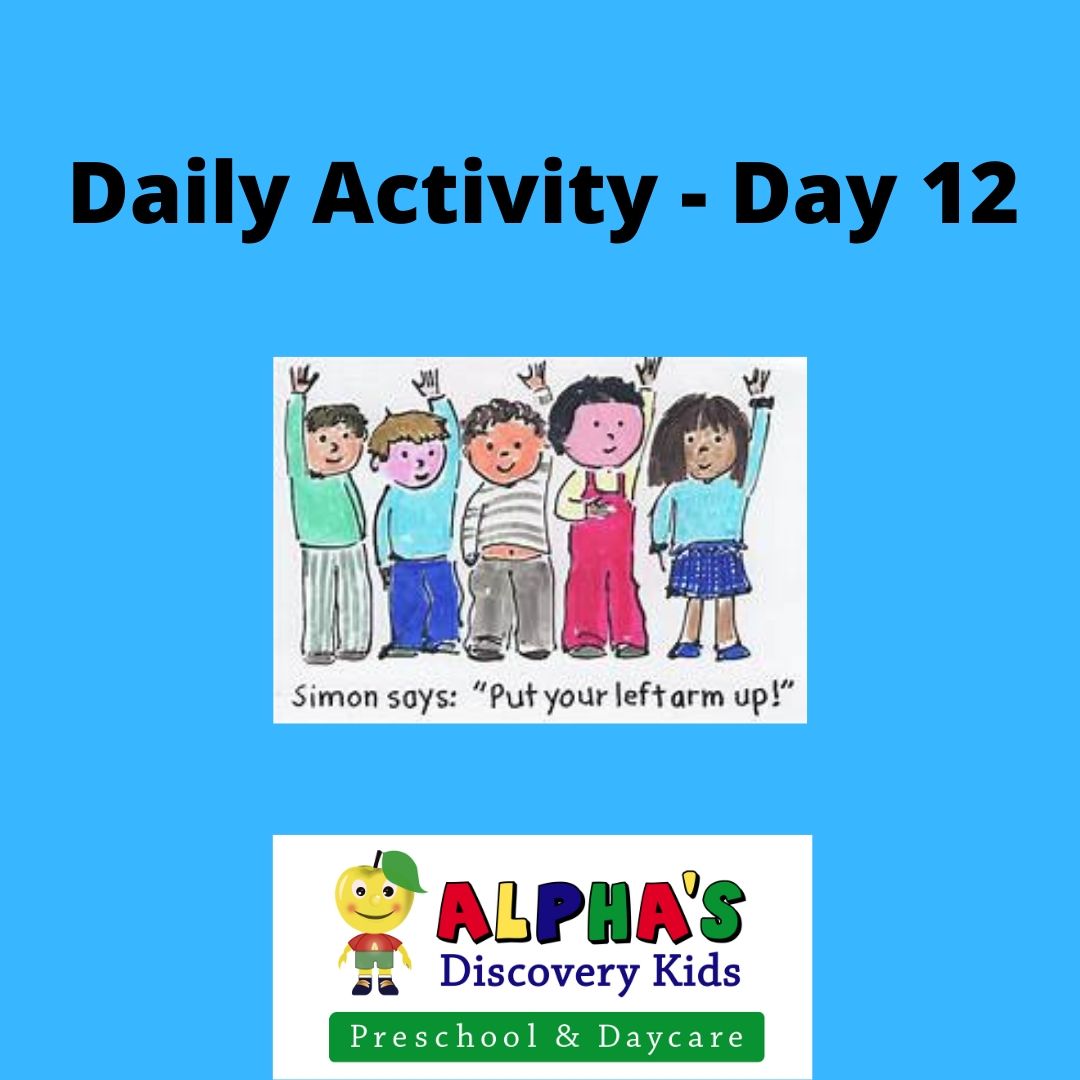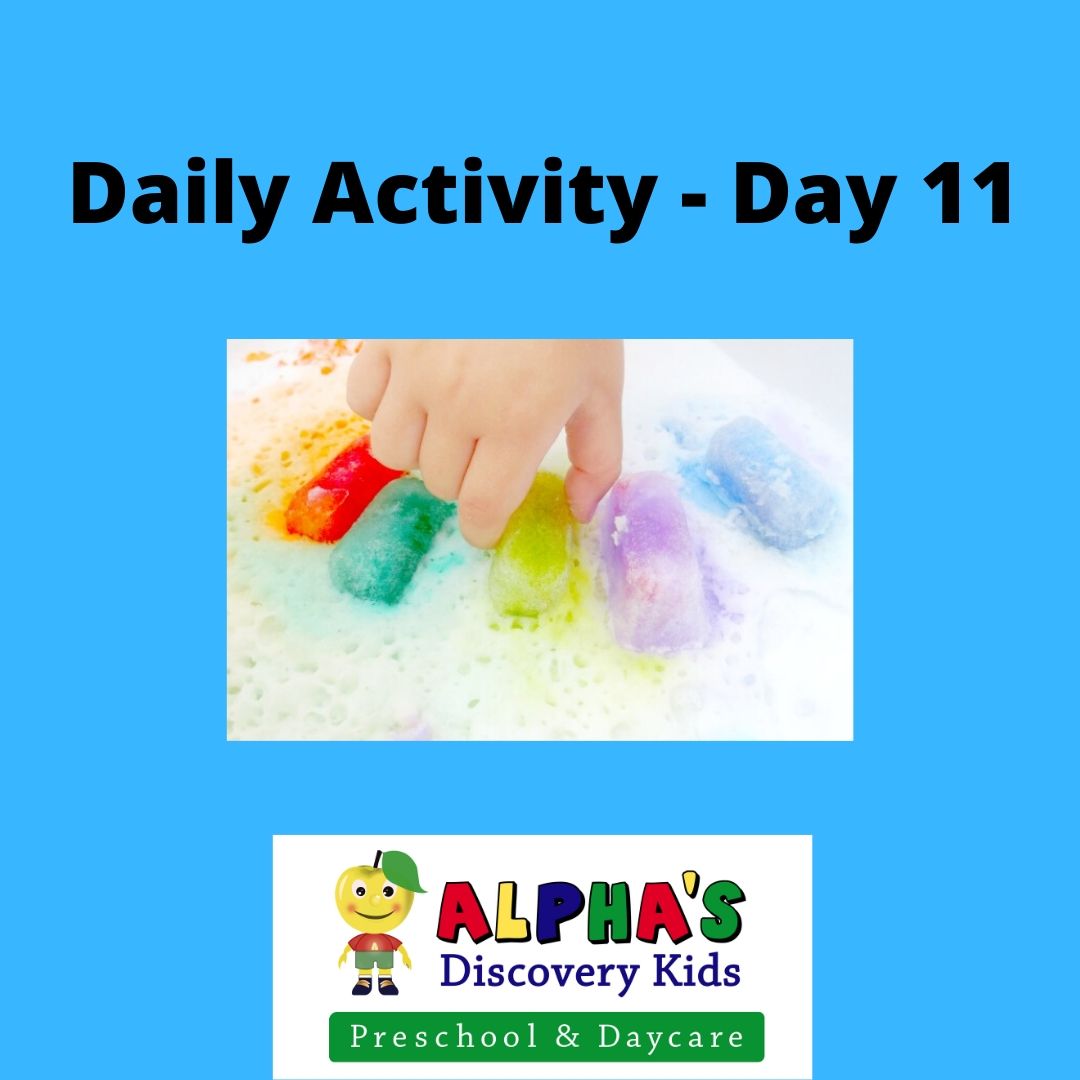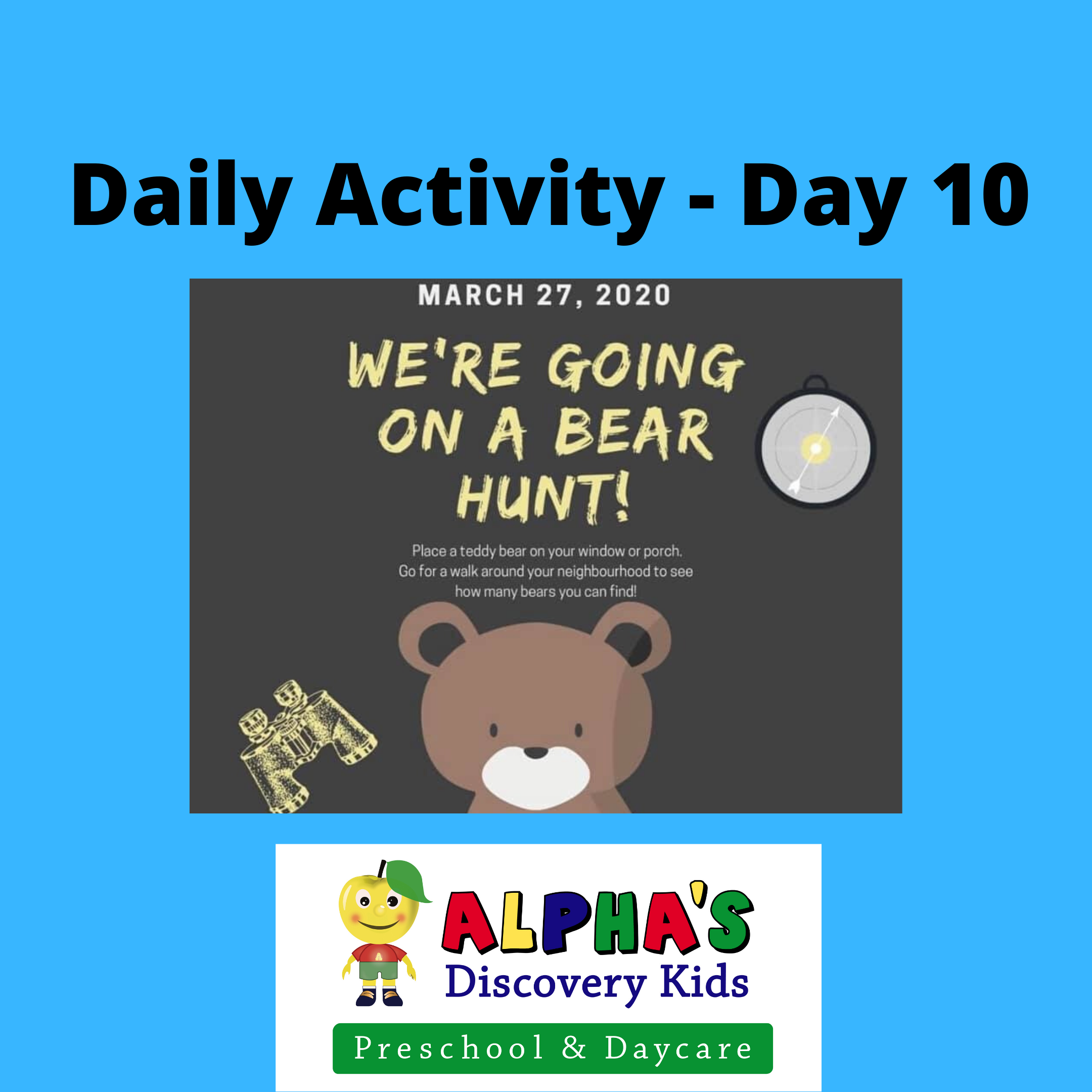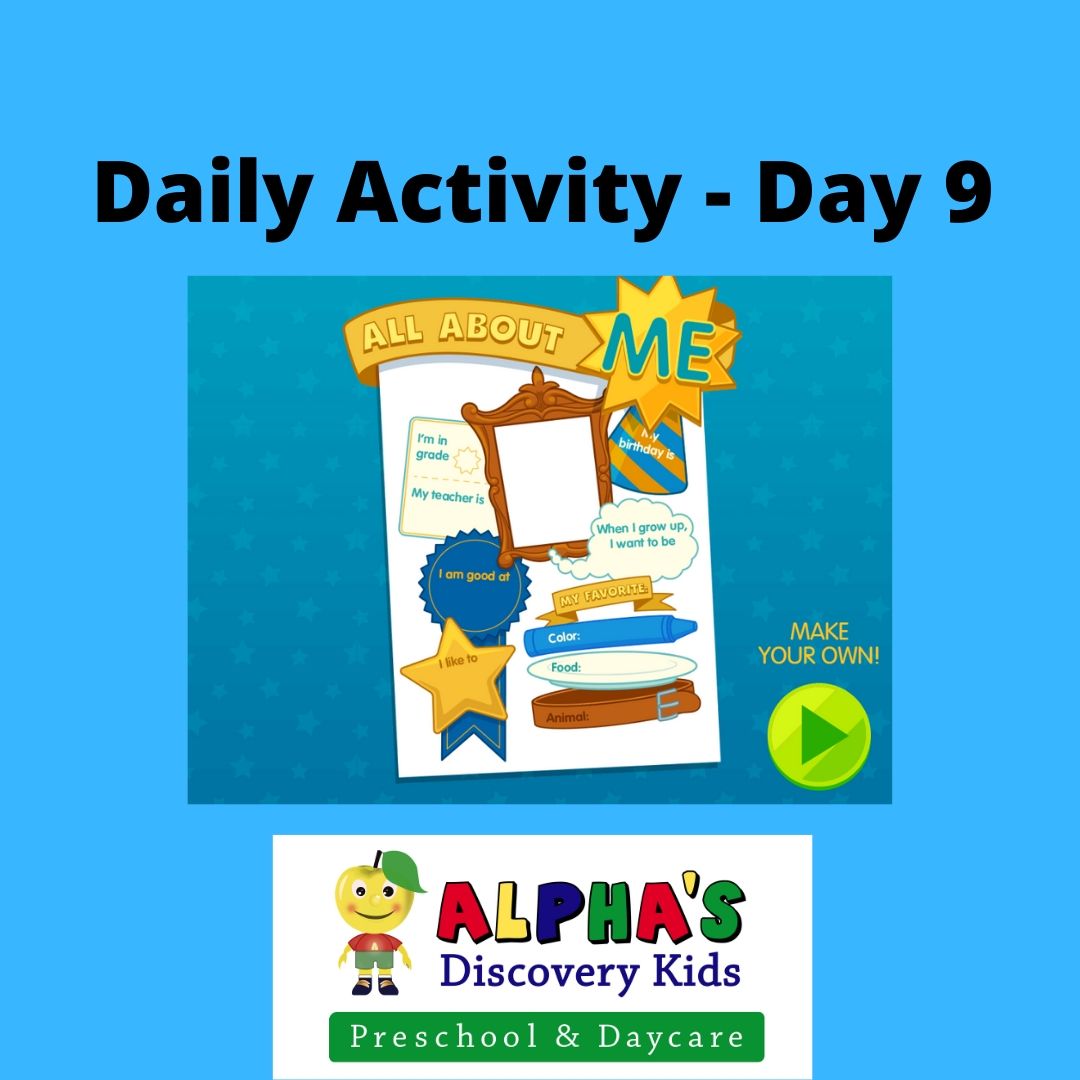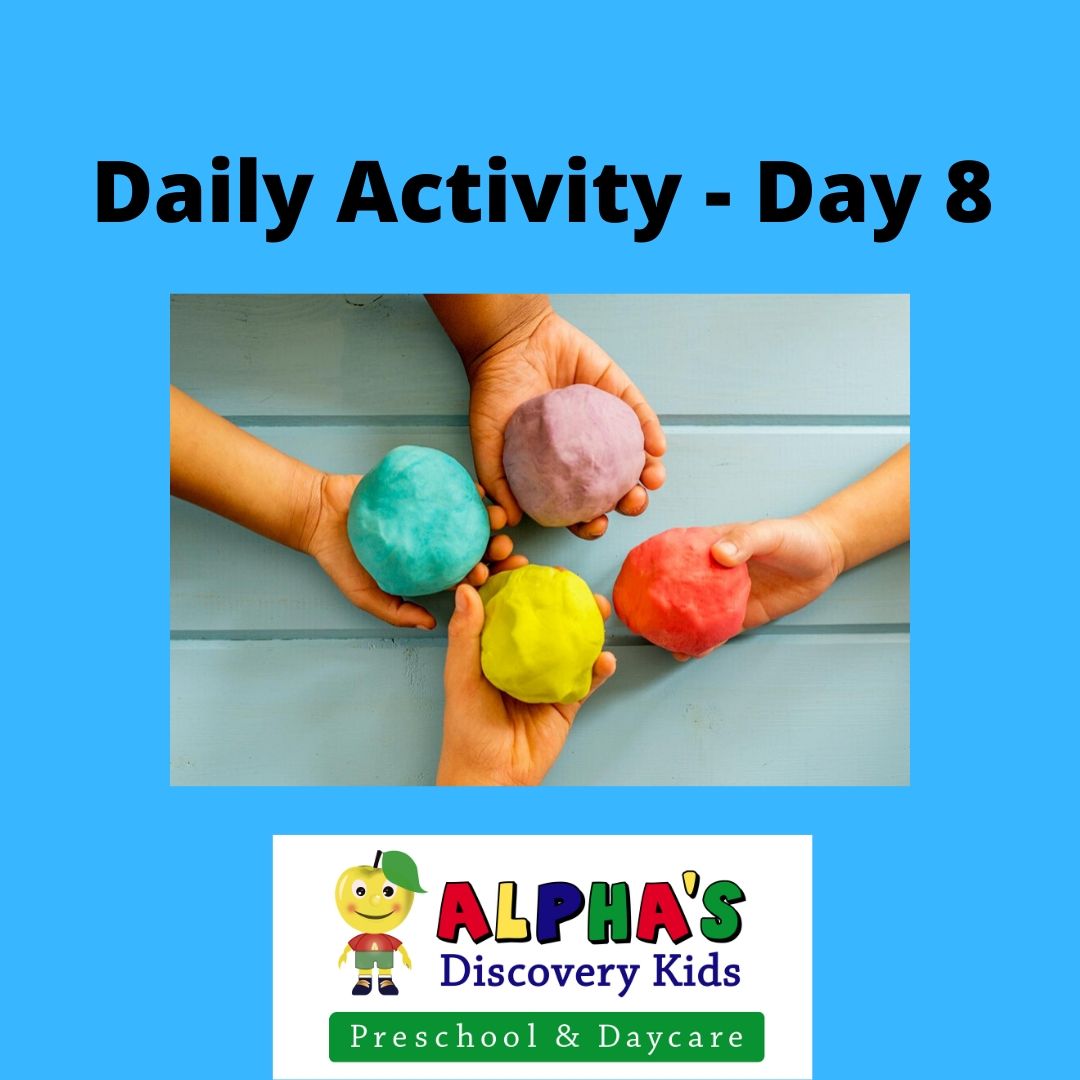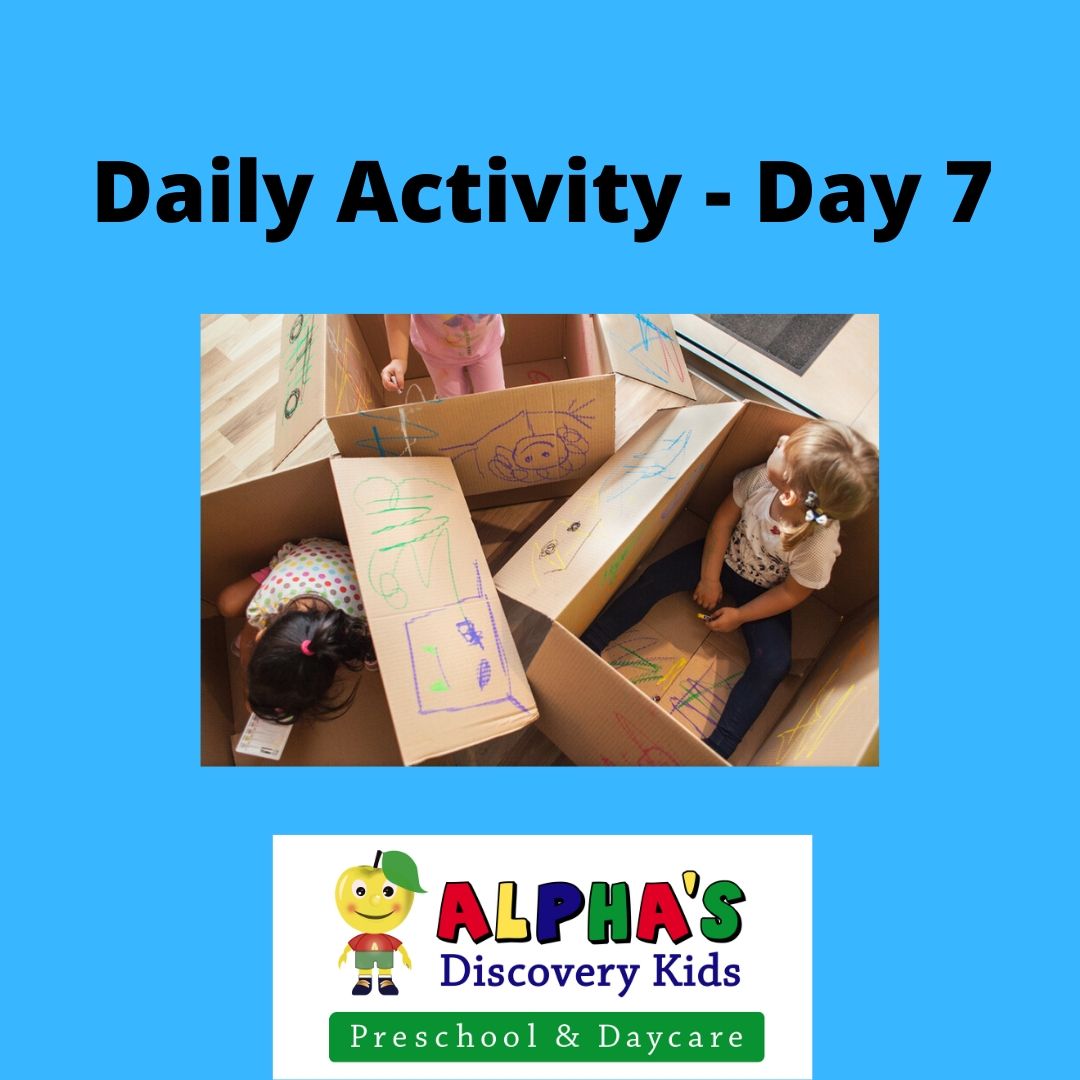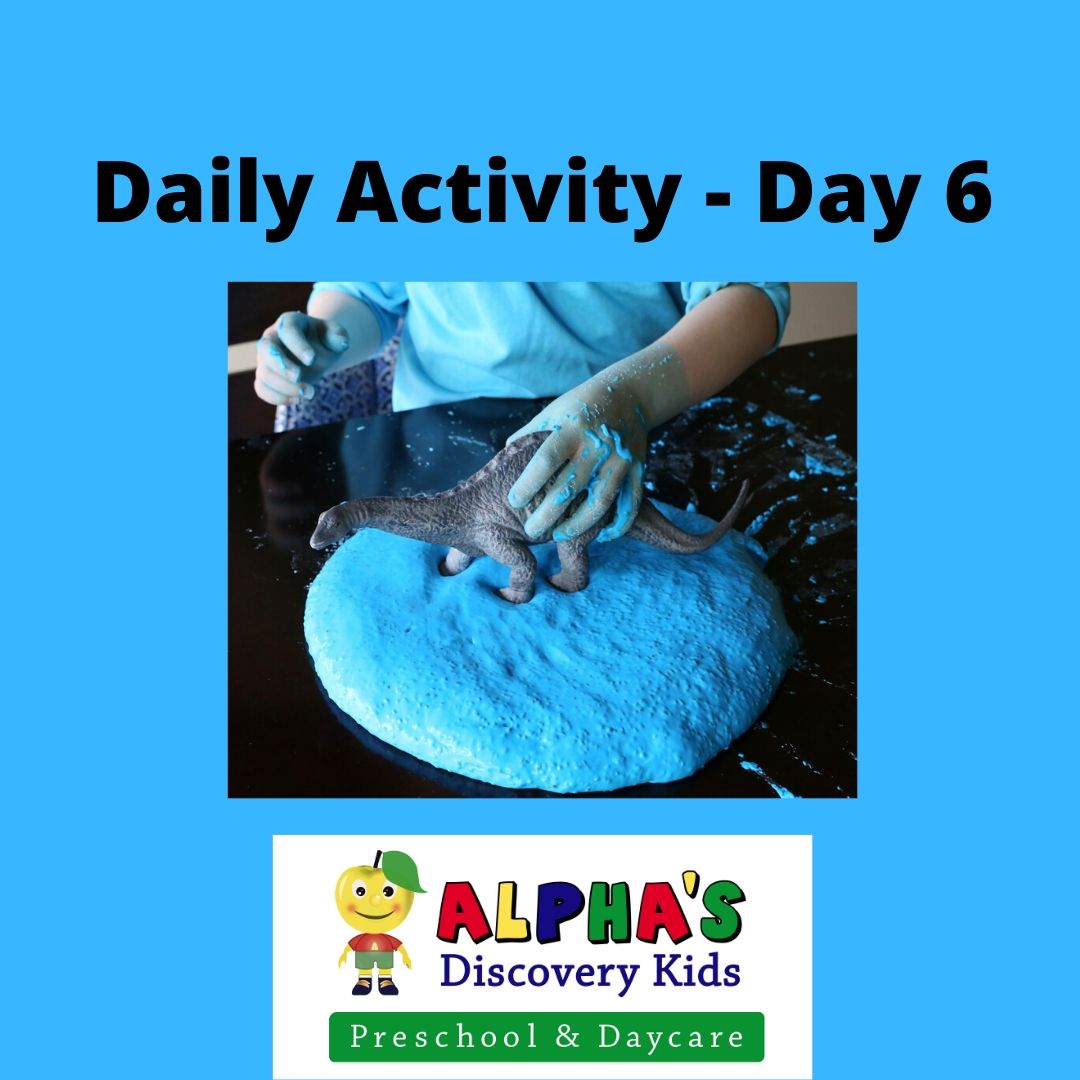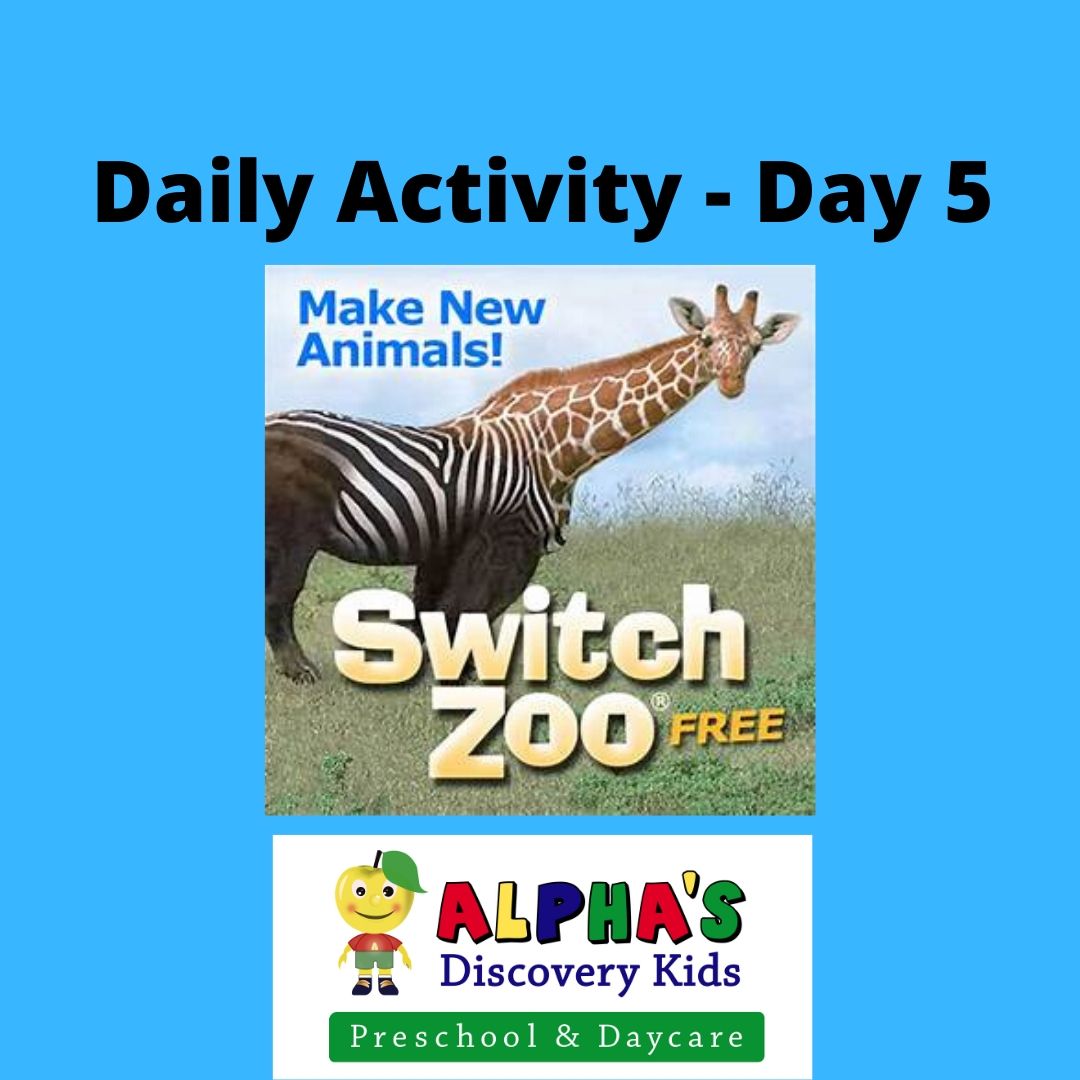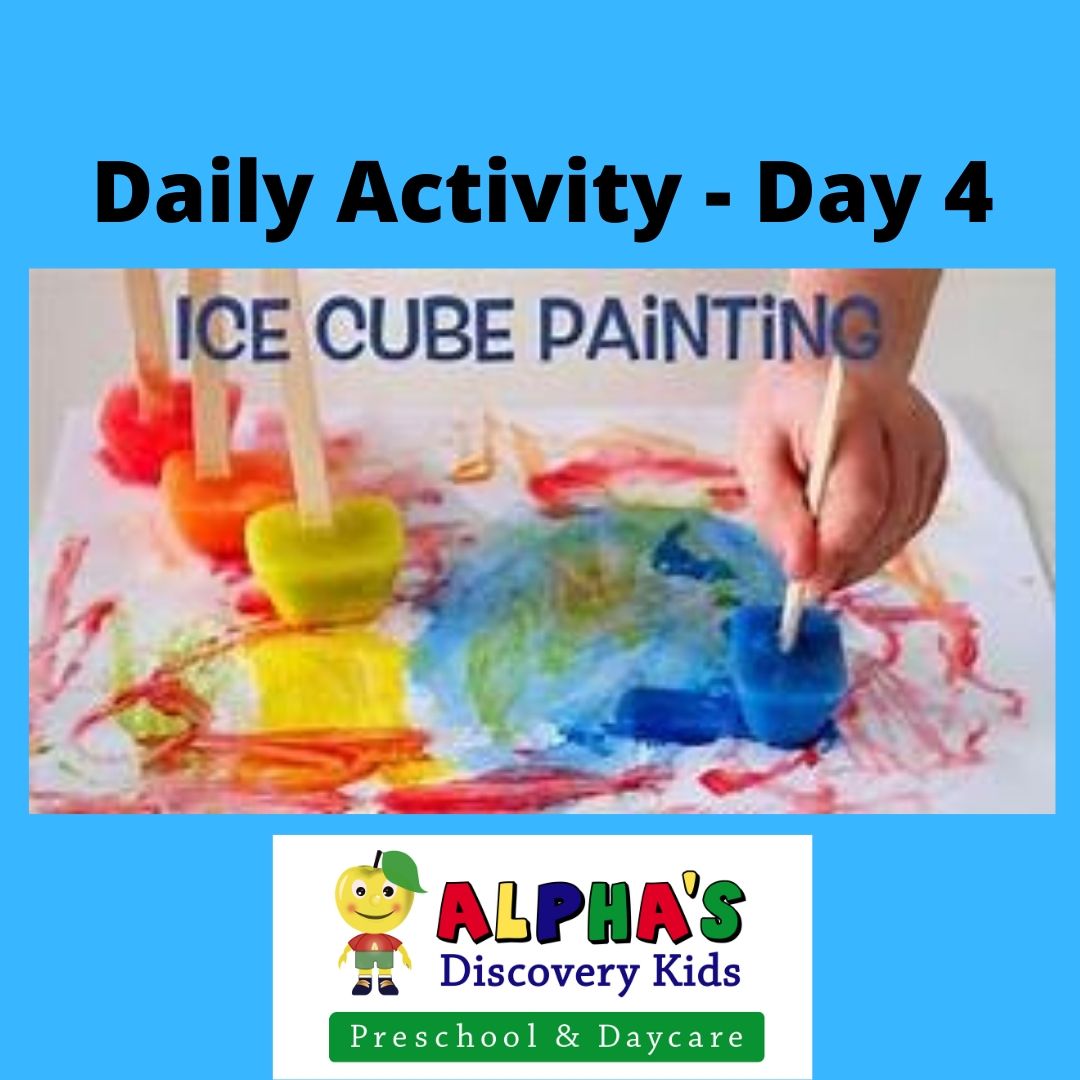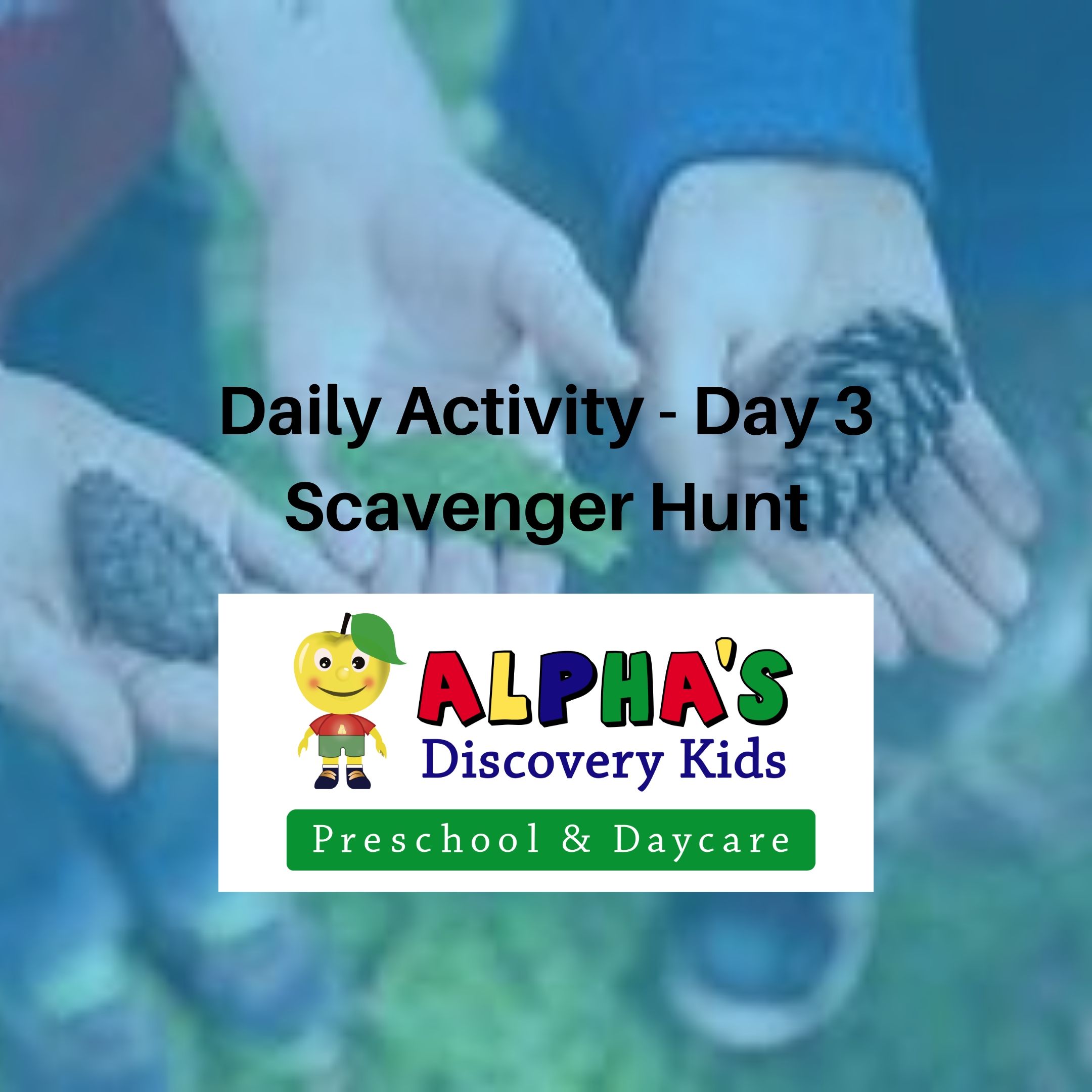Daily Activity for Kids – Day 12 – Impulse Control Games
Daily Activity for Kids – Day 12 – Impulse Control Games
During this COVID-19 pandemic, many parents are home with their children and looking for things to do. This is a daily post to give you ideas of fun things to do. It comes from activities that we implement at our daycare centre using our Four Pillars of Learning curriculum. Since we are closed during this time, we are sharing the activity for you to implement in your own home. Enjoy!
Today’s Activity: Impulse Control Games
Self-regulation—or the ability to control your own emotions and behaviour—is an essential life skill for children: It helps with everything from social relationships to self-care to learning how to read and write. If a child can handle their feelings and choose to act in ways that help them achieve specific goals (such as ignoring distractions to focus on reading, or not melting down after losing at a game so other children will want to keep playing with them), they are off to a great start in life.
Any game that requires controlling impulses and movements can help children increase their control over their own thoughts, emotional responses and actions. Those games that involve winning or losing also help children practice being a good sport and tolerating discomfort, so they’re better equipped to deal when things don’t go the way they’d hoped.
Here are a couple of easy games to help your child to self-regulate by learning to control impulses.
- Freeze dance. Have a dance party with family members and tell everyone that when you stop the music, they must hold very still. The first person to move is eliminated for the next round. The winner is the last one dancing. Children tend to feel more comfortable in an environment that is familiar to them, like home. This is a great time to help children with their emotions by letting them see that eventually everyone gets out, that they will have another chance and that with practice they will get better.
- Simon says is another great option. One person is the leader and tells everyone else to do an action. If they say Simon Says and then the action, everyone follows. If not, they don’t. Children must follow rules and instructions. This means they have to listen, without distraction to make sure that they get it right. Again, play with family and when you don’t follow what Simon says, you are out until the next round.
Although it can be tough to teach our children that it is okay to lose in a world where everyone gets a trophy, it is a valuable life lesson for when they are older and more difficult defeats will come. Self-regulation is the key to a successful future.
This daily kids activity incorporates many learning areas based on our Four Pillars of Learning curriculum including: Mindfulness through Self-regulation.
Daily Activity for Kids – Day 11 – Fizzy Ice Cubes Activity
Daily Activity for Kids – Day 11 – Fizzy Ice Cubes Activity
During this COVID-19 pandemic, many parents are home with their children and looking for things to do. This is a daily post to give you ideas of fun things to do. It comes from activities that we implement at our daycare centre using our Four Pillars of Learning curriculum. Since we are closed during this time, we are sharing the activity for you to implement in your own home. Enjoy!
Today’s Activity: Fizzy Ice Cubes Activity
Science is a great way to keep kids entertained. It is usually filled with cool things happening, bright colours and sometimes unpredictable outcomes. Science education activities provide children with opportunities to develop and practice many different skills and attributes. These include communication skills, collaborative skills, team working and perseverance, as well as analytical, reasoning and problem-solving skills. This is an interesting experiment involving baking soda and vinegar with an icy twist!
Step 1: Gather the following ingredients
- 1 cup of baking soda
- 1 tsp of clear gelatin
- ¼ cup of water
- Food colouring
- Ice cube tray
- Vinegar
Step 2: Mix together the baking soda and gelatin
Step 3: Add of few drops of food colouring to the water and pour into the baking soda mixture. Mix well. You can separate the mixture into four equal parts and have four different colours or make extra batches with new colours.
Step 4: Separate the mixture evenly in the ice cube trays. Freeze overnight
Step 5: Remove the cubes from the tray and put them in a shallow dish. Let your child pour some vinegar over the ice cubes. Watch it begin to fizz. You can use a small measuring cup, a turkey baster or eyedropper to pour the vinegar to develop fine motor skills.
Here’s some questions to ask. What do you think will happen when we pour the vinegar over this? What do you think will happen when the colours begin to mix together? Do you think one colour will melt faster than the others?
This daily kids activity incorporates many learning areas based on our Four Pillars of Learning curriculum including: STEAM (Science) and language skills.
Daily Activity for Kids – Day 10 – Going on a Bear Hunt Activity
Daily Activity for Kids – Day 10 – Going on a Bear Hunt Activity
During this COVID-19 pandemic, many parents are home with their children and looking for things to do. This is a daily post to give you ideas of fun things to do. It comes from activities that we implement at our daycare centre using our Four Pillars of Learning curriculum. Since we are closed during this time, we are sharing the activity for you to implement in your own home. Enjoy!
Today’s Activity: Going on a Bear Hunt Activity
Many communities have banded together during this pandemic with “social distancing” group activities for kids. Some of these activities included posting shamrocks in the windows on St. Patrick’s Day and walking around the neighbourhood to find them. Today, I came across another one of these activities on a few social media parent groups and I want to share it as a simple activity that you can do today. At our daycare centre, one of the children’s favourite songs is “Going on a Bear Hunt”. When we put the music on, the children gather around and pretend to go on a hunt. They LOVE it! For today’s activity, you will go on a bear hunt with your child and possibly your whole neighbourhood!
Step 1: Find a teddy bear and put it in the window or front porch of your home so that is visible to people walking by.
Step 2: Get a copy of the “going on a bear hunt” song and download it to your phone. You can find it on Youtube.
Step 3: Play the song while you go on a walk in your neighbourhood. See if you can find any bears in the windows of your neighbourhood homes. Many community parent groups have posted this so you may see some families participating. Also, you can try to organize it on your own street if you have a way to contact them. Perhaps you can post this activity on your neighbourhood social media group to encourage more awareness and participation.
Step 4: Take pictures of your bear and any other bears you find along the walk.
Enjoy all the physical activity and sense of community belonging that comes with this activity!
This daily kids activity incorporates many learning areas based on our Four Pillars of Learning curriculum including: Physical activity, social and language skills.
Daily Activity for Kids – Day 9 – All About Me Activity
Daily Activity for Kids – Day 9 – All About Me Activity
During this COVID-19 pandemic, many parents are home with their children and looking for things to do. This is a daily post to give you ideas of fun things to do. It comes from activities that we implement at our daycare centre using our Four Pillars of Learning curriculum. Since we are closed during this time, we are sharing the activity for you to implement in your own home. Enjoy!
Today’s Activity: All About Me Activity
As parents, we know that you are concerned about limiting the use of technology for your kids or “screen time”. We believe that technology can be a great thing for families, if used wisely. We have found a great website which allows children to partake in fun activities while learning things like, math, numbers, strategy or skill. Our challenge activity today is to create your all about me page. Here are the steps below.
Step 1: Open up the website, www.abcya.com and click on the Pre-k option for children under 4. (there are options from Pre-k up to Grade 6) Once there, scroll down to the Preschool word games, you will see the “All About Me” option. Choose that one.
Step 2: Help your child to walk through each answer and don’t forget to let them draw themselves. (it was our favourite part!)
Step 3: When it is complete, save it to your computer and share with us either on our Facebook @alphaspreschool or our Instagram @Alphaskids pages. We can’t wait to learn all about you.
This website also offers other great games for children. Magic Molly’s Adventure is a great game where children get to choose the destination of a unicorn who is trying to find a rainbow. Alphabet Bubble is a great game to help children recognize letters. Once you have completed each game, it will tell the children what words start with the letter. You can even make your own pizza. It made us soooo hungry! Technology can be a great and wonderful tool. I hope you have as much fun as we did with this fun and educational website.
This daily kids activity incorporates many learning areas based on our Four Pillars of Learning curriculum including: STEAM (technology) and language and literacy.
Daily Activity for Kids – Day 8 – Homemade Playdough
Daily Activity for Kids – Day 8 – Homemade Playdough
During this COVID-19 pandemic, many parents are home with their children and looking for things to do. This is a daily post to give you ideas of fun things to do. It comes from activities that we implement at our daycare centre using our Four Pillars of Learning curriculum. Since we are closed during this time, we are sharing the activity for you to implement in your own home. Enjoy!
Today’s Activity: Homemade Playdough
Working with play dough is a great stress reliever activity for both adults and children. Playdough is such a great way to let you imagination run wild. You can build shapes, faces and other various items. There are so many benefits to working with playdough as it enhances fine motor skills, improves pre-writing skills, helps develop hand eye co-ordination , creativity and imagination and has a calming effect. Instead of buying play dough, we recommend making your own as we do in all our centres – all ingredients are readily available at a grocery store. This is the recipe that we use.
Step 1: You will need to collect the following items
- 1 cup of flour
- ½ cup of table salt
- 2 tbsp of cream of tartar
- 1 tbsp of oil
- 1 cup of boiling water
- Food colouring
Step 2: In a bowl, combine the flour, salt and cream of tartar. Mix well. Add in the oil. Have children participate by measuring and pouring the ingredients. This is a great opportunity to develop math skills and coordination skills.
Step 3: Mix a few drops of food colouring into the boiling water and add to the bowl. You can also mix colours to create new colours.
Step 4: Mix everything together very well and massage with your hands until it is no longer sticky.
Step 5: Portion it out in small batches to use. We recommend both adults and children work with the play dough side by side. Gather all the tools you will use to manipulate the play dough. Here’s some suggestions: rollers, cookie cutters, plastic knives, spoons, popsicle sticks, and things that can make imprints in the dough such as animals, dinosaurs, cars etc. Have fun with it!
The great thing about playdough is that it lasts. Once you are finished playing with it you can wrap it in plastic and seal it in an airtight container and it can last for up to 6 months.
This daily kids activity incorporates many learning areas based on our Four Pillars of Learning curriculum including: STEAM (science, math) and physical activity.
Daily Activity for Kids – Day 7 – Cardboard Box Activity
Daily Activity for Kids – Day 7 – Cardboard Box Activity
During this COVID-19 pandemic, many parents are home with their children and looking for things to do. This is a daily post to give you ideas of fun things to do. It comes from activities that we implement at our daycare centre using our Four Pillars of Learning curriculum. Since we are closed during this time, we are sharing the activity for you to implement in your own home. Enjoy!
Today’s Activity: Cardboard Box Activity
Have you ever noticed that kids love to play with boxes – and sometimes more so than what was inside the box? A cardboard box is a versatile toy that you can transform into anything you want. All you need for this activity is your imagination and an empty box from a recent delivery. In these days, you may have lots of empty boxes around from the deliveries you are getting. Here’s some ideas to transform your cardboard box into hours of fun!
Step 1: Find an empty cardboard box. This can be any size but bigger is better! Bigger boxes allow your child to get inside it which is always more fun. (make sure there is nothing in the box such as plastic wrap/foam and there are no staples or other hazards)
Step 2: Gather the materials you need to decorate your box. You can use crayons, markers, paint, glue, collage materials. Let it dry completely.
Step 3: Ask your child what they want the box to be. There are endless possibilities here. The box can be a boat, truck, train, rocket, garbage truck, garage, house etc. Try to go with your child’s ideas instead of your own. Remember, the box can be a boat one minute and a train in the next one. Follow your child’s lead.
Step 4: Add specific features to the box for more interest. Make holes for windows, add a chimney, wheels etc.
Step 5: Research more ideas of what you can with a cardboard box. This website has some great ideas!
www.herecomethegirlsblog.com/2013/12/26/100-ways-use-cardboard-box.html
We use cardboard boxes often in our daycare centre. We know that as soon as we bring out a box, the children are ready to climb inside it. Be sure to stay safe and supervise their play while using the boxes.
This daily kids activity incorporates many learning areas based on our Four Pillars of Learning curriculum including: STEAM (engineering, art).
Daily Activity for Kids – Day 6 – Make Slime
Daily Activity for Kids – Day 6 – Make Slime (taste safe)
During this COVID-19 pandemic, many parents are home with their children and looking for things to do. This is a daily post to give you ideas of fun things to do. It comes from activities that we implement at our daycare centre using our Four Pillars of Learning curriculum. Since we are closed during this time, we are sharing the activity for you to implement in your own home. Enjoy!
Today’s Activity: Make Slime (taste safe)
Today we are making slime that is safe for tasting. It probably won’t taste good but it won’t hurt to taste it. It also has a nice texture with the chia seeds.
Step 1: Collect the items you will need.
- ¼ cup chia seeds
- 1 ¾ cup of water
- Food colouring
- 3-4 cups of cornstarch
Step 2: Mix the chia seeds, food colouring and water together.
Step 3: Cover and refrigerate overnight.
Step 4: Uncover and add the corn-starch a little at a time. About a cup at a time. Mix and then continue until your achieve the desired level of consistency. It should be like regular slime – slimy but can easily be taken off hands.
Step 5: Store slime covered in the refrigerator. You will need to add a little water each time you take it out to use it. It will reactivate the slime.
Did you know that slime resembles both a liquid and a solid? This is a great discussion to start with your children. You can look up other items that have similar properties, or you can compare and chart items that are liquid and items that are solid. See how many you can name. Did you know that slime can be destroyed by vinegar? When you are finished playing with your slime, add vinegar to it and watch it completely dissolve.
This daily kids activity incorporates many learning areas based on our Four Pillars of Learning curriculum including: STEAM (science an
Daily Activity for Kids – Day 5 – Online Kids Activity
Daily Activity for Kids – Day 5 – Online Kids Activity
During this COVID-19 pandemic, many parents are home with their children and looking for things to do. This is a daily post to give you ideas of fun things to do. It comes from activities that we implement at our daycare centre using our Four Pillars of Learning curriculum. Since we are closed during this time, we are sharing the activity for you to implement in your own home. Enjoy!
Today’s Activity: Create a New Animal Species – Online Kids Activity
Have you ever wanted to create your own animal species? Maybe you thought a dog mixed with a cat would be a good idea and you invented the “Cog” or the “Dat”. We found an amazing free website that allows you to do just that. It is called “Switchzoo”. We have a challenge for you. Follow these five steps to complete our Switchzoo challenge.
Step 1: Go to the website www.switchzoo.com. Click on the link “Make and Play”. Then click on the Switch Zoo Habitats Map and pick your favourite animal. We picked the elephant to start with.
Step 2: Switch off various parts of your animal with the pictures provided and create your new animal. Don’t forget to name it. We created a Rabbiturtphant
Step 3: Then move around the habitats creating all kinds of unique and fun animals. You must name each animal you create.
Step 4: Pick your favourite animal creation and make up a short story about it. We want to know its name, where it lives, what it eats and if you would keep it as a pet. If your child can write, have them write the story. If not, you can ask them questions and record their answers in a story format.
Step 5: Share you creations with us by either sending us a picture and the story through Facebook or IG. We would love to hear about what animals you made. You can post it in the comments here!
Switchzoo is full of other ways to enjoy the website. You can listen and figure out which animal is making the music you are hearing or you could take an adventure and create a new biome as well. It is a great place to learn and have fun.
This daily kids activity incorporates many learning areas based on our Four Pillars of Learning curriculum including: STEAM (science, technology and language and literacy).
Daily Activity for Kids – Day 4 – Ice Painting
Daily Activity for Kids – Day 4 – Ice Painting
During this COVID-19 pandemic, many parents are home with their children and looking for things to do. This is a daily post to give you ideas of fun things to do. It comes from activities that we implement at our daycare centre using our Four Pillars of Learning curriculum. Since we are closed during this time, we are sharing the activity for you to implement in your own home. Enjoy!
Today’s Activity: Ice Painting
Today we wanted to provide you with a simple activity that not only involves colour and art but also involves a bit of science. We are going to show you how to make ice paints.
Step 1: Gather the following items
- Ice cube tray
- Water
- Food colouring
- Popsicle sticks
- White paper
Step 2: Fill the ice cube tray with water but be sure not to over fill them.
Step 3: Add a small drop of food colouring to each cube. If you want to mix colours, have your child add a drop of a different colour to see what happens. You can have them guess the result before doing it.
Step 4: Cut a popsicle stick in half and use the flat end to mix the water and food colouring together. Leave the popsicle stick in and freeze overnight.
Step 5: Once frozen, have your child paint on white paper to see the results. You can have them mix the ice paints and see what colours they can create.
There are so many learning opportunities with this activity. Children learn how to freeze water and what temperature water needs to get to freeze. You can discuss colour mixing with your children and have them test various colours. Before doing this have them make predictions of what could happen. As they are painting, you can discuss with them why the ice cube is leaving colour on their paper. You can also discuss why the ice cube is melting. Once they are done painting, you could put all of the ice cubes in a large bowl and watch what happens as the colours mix together. Opportunities are endless for learning and fun.
This daily kids activity incorporates many learning areas based on our Four Pillars of Learning curriculum including: STEAM (science and art).
Daily Activity for Kids – Day 3 – Scavenger Hunt
Daily Activity for Kids – Day 3 – Scavenger Hunt
During this COVID-19 pandemic, many parents are home with their children and looking for things to do. This is a daily post to give you ideas of fun things to do. It comes from activities that we implement at our daycare centre using our Four Pillars of Learning curriculum. Since we are closed during this time, we are sharing the activity for you to implement in your own home. Enjoy!
Today’s Activity: Scavenger Hunt
With spring weather approaching, why not get outside for some fun, exercise and a break from the indoors and what better way to do that then with a scavenger hunt.
Step 1: Prepare your scavenger hunt list. It can include the following items.
- Something colourful (you can also name a certain favourite colour)
- A pine cone
- An acorn
- Something smooth
- Something rough
- Two kinds of leaves
- Two kinds of sticks
- Something bumpy
- A flat rock
- Something fuzzy
- Something pretty
- A chewed leaf
- A flower or petal
- A piece of litter
- Something you think is a treasure
Step 2: Plan where you will go. Will it be a local park, a hiking trail, or even your own backyard? You can decide to collect each item and bring it home or you can take pictures and make a collage of your journey to remember it.
Step 3: You can separate into teams to make it a fun challenge (make it competitive) or work together as a family to complete the list together.
Step 4: Once you have all the items (either collected or pictures), take them back home and create a fun story with the family using the items you have. E.g. There once was a beautiful (insert your something colourful) who became friends with a pine cone named (name your pine cone) and then keep going until you reach the end of your story. This builds language and literacy skills.
Step 5: Make a collage picture of all the items you collected. You can glue the actual items on the paper or pictures of them to your collage picture. This will be a lovely keepsake.
This is something that you can do daily or weekly. You can change your list each time. Every child loves a scavenger hunt!
This daily kids activity incorporates many learning areas based on our Four Pillars of Learning curriculum including: language and literacy, science (nature), art and physical activity.

